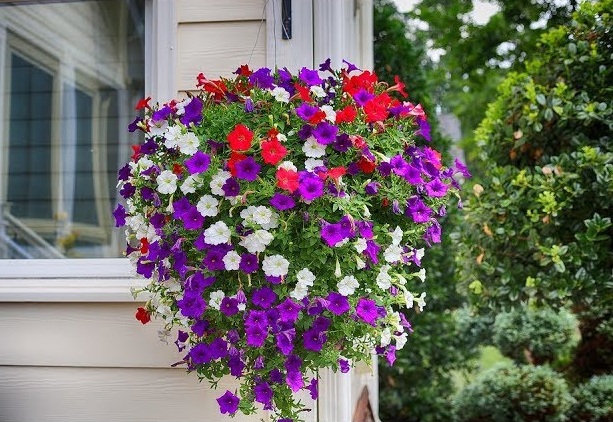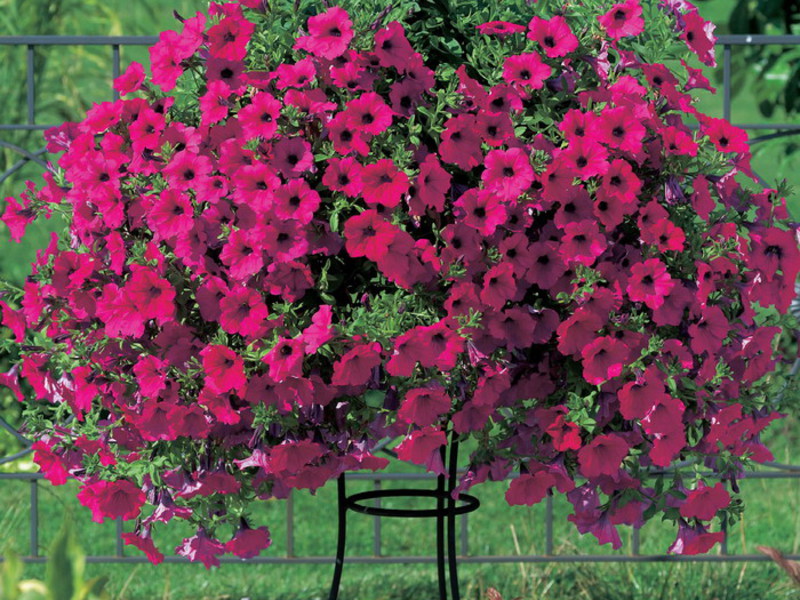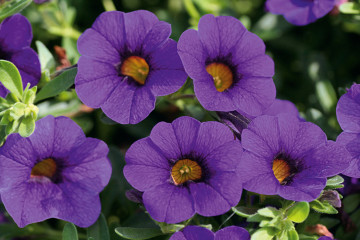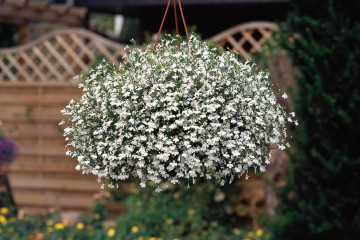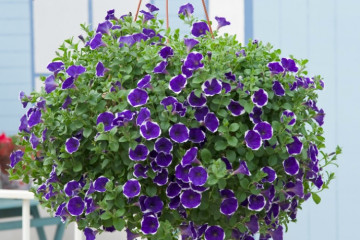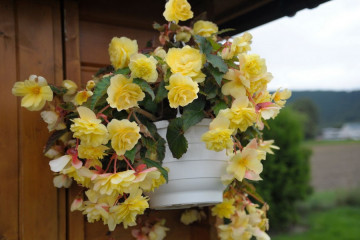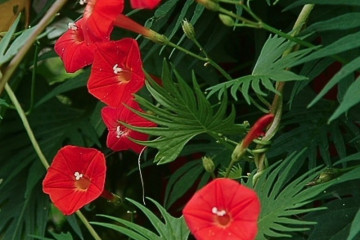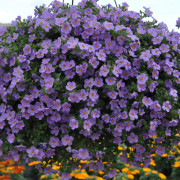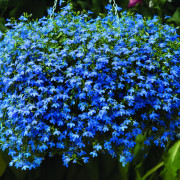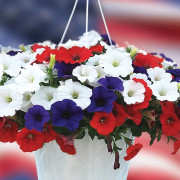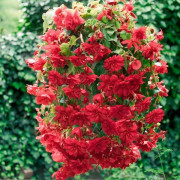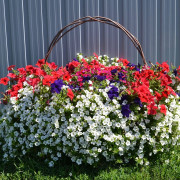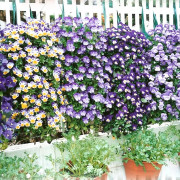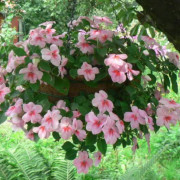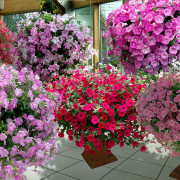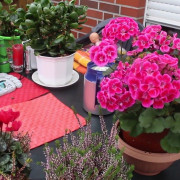What is the difference between ampelous petunia and cascade
Content:
Petunia is a favorite ornamental plant of gardeners. It has a graceful appearance, thin shoots and resembles a waterfall covered with flowers. The homeland of the shrub is South America. More than 100 years ago, modern hybrids were developed and adapted for the weather conditions of other countries.
Flower features
Why culture is attractive for gardeners:
- rich palette for creating landscape design, decorating flower beds and pots;
- unpretentious cultivation;
- compatibility with any crops on the site.
There are three types of petunias:
- ampelous;
- bush;
- cascading.
You can determine the bush variety by its appearance, the sprouts are directed upward or to the sides. However, the differences between ampelous and cascading petunias are less obvious to a novice grower.
Petunia ampelous and cascading: difference
In appearance, the ampelous variety has a number of features:
- inflorescences resemble bells in shape. Dozens of flowers are located along each shoot, in the axils of the plant;
- the palette includes colors from white to purple. Typically, the insides are darker than the petals;
- stems of various lengths, about 30-100 cm. During the growth period, the shoots fall to the ground, and do not fall apart on the sides. Thanks to this, you can grow in hanging flowerpots and form the crown at the discretion of the gardener;
- some varieties have large buds up to 10 cm in diameter. In such cases, you do not have to wait for a large number of flowers. Other varieties are distinguished by buds from 3 to 7 cm, arranged in 3 or 10 pieces. on the sprout.
How does cascade petunia differ from ampelous:
- the plant has strong elastic shoots that do not break under gusts of wind. The length of each of them reaches 1.5 m. A solid mass of greenery grows from the sinuses. The stems begin to grow upward, but upon reaching a certain height, they tend to the ground;
- in appearance, the crown looks like a ball framed by a cascade of flowers;
- buds reach a diameter of 5 cm. At the same time, all flowers are of the same size on one plant.
Petunia ampelous and cascading - the difference:
- ampelous has thin stems up to 1.5 m in length. The cascading plant is distinguished by thick lashes of about 2 m;
- the direction of growth in ampelous petunia is down;
- the buds of ampel varieties have different shades and numbers, while the parameters of the cascade are stricter: all flowers are of the same color and size;
- the best option for ampelous planting are hanging containers. Ball-shaped varieties prefer floor vases, pots, flower beds, and other common planting methods.
How to distinguish ampelous petunia from bush
Bush petunias are the least demanding to care for, just pinch the top. This variety is the most common and includes several varieties in different shades. In shape, it resembles a small tree with a cloud of red, purple or variegated crown. In length, these representatives reach 30 cm, while the stems grow upward. There are terry, small-flowered and large-flowered varieties.
Features of the bush variety:
- rounded green shoots;
- the roots are shallow in the ground;
- the entire green mass of the plant is covered with a small fluff;
- each variety is distinguished by large flowers, the diameter of which is at least 10 cm;
- the pedicel is short, the stems are erect;
- the transition of shades on flowers is smooth, gradient. There are contrasting blotches on the edges;
- the edges of the buds can be with sharp teeth, wavy or corrugated;
- after the end of the flower formation period, the seed box remains.
How to distinguish ampelous petunia seedlings from bush
It will not be possible to reveal the difference and signs for small shoots, since all varieties look the same during this period.
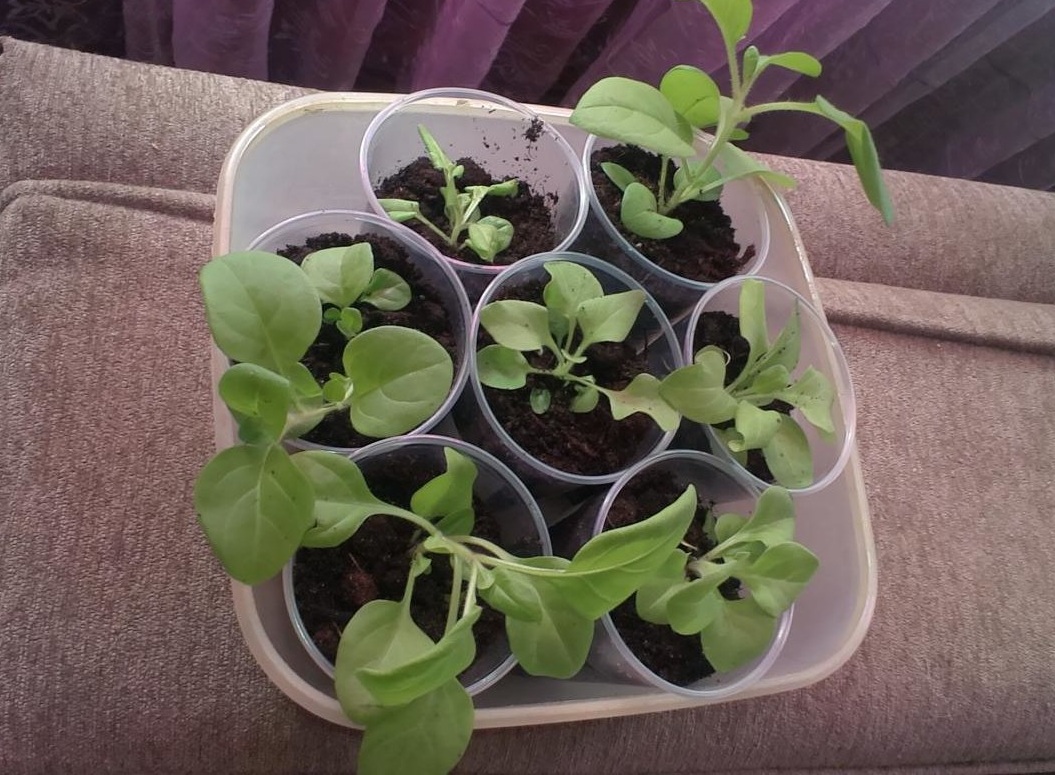
Only after the appearance of the first shoots in the seedlings will it become clear how the formation proceeds.
Ampel petunias begin to grow lateral stems. In shape, such a flower will resemble a small bush without a main stem.
It is common for a bush variety to start growing precisely from the main whip, from which lateral processes will later go. As a rule, this occurs after the pinching or the appearance of the first buds.
Features of growing petunias:
- cultivation takes place in seedlings in late March or early April;
- before landing in open ground, make sure that the air is warmed up;
- use pots with a wide top, since the plant has a root system close to the surface;
- it is important to ensure that the soil is not flooded with water, otherwise there is a risk of fungal disease.
Plant care rules:
- the flower garden must be kept clean, it is important to remove weeds;
- dig the soil shallowly;
- feeding in the form of liquid solutions is administered 2 times a month;
- when flowers appear, fertilize with phosphorus and potassium.
Petunia is the real queen of the flower bed. It is a good option for decorating a garden, balcony, terrace, window sill or building wall. These flowers are planted in pots, pots and open ground. For planting, sunny areas protected from strong winds are suitable.
The form of this plant is genetically inherent, the method of cultivation depends on it. What is the difference between ampelous petunia and cascade and bush:
- short stems;
- flowers on one plant can be of different shapes and shades;
- the greens immediately fall from the pot to the ground.
To distinguish ampelous from ordinary petunias, you should pay attention to the method of forming shoots. The former does not have a main stem. This is what you should be guided by when choosing, so as not to buy a "pig in a poke".

